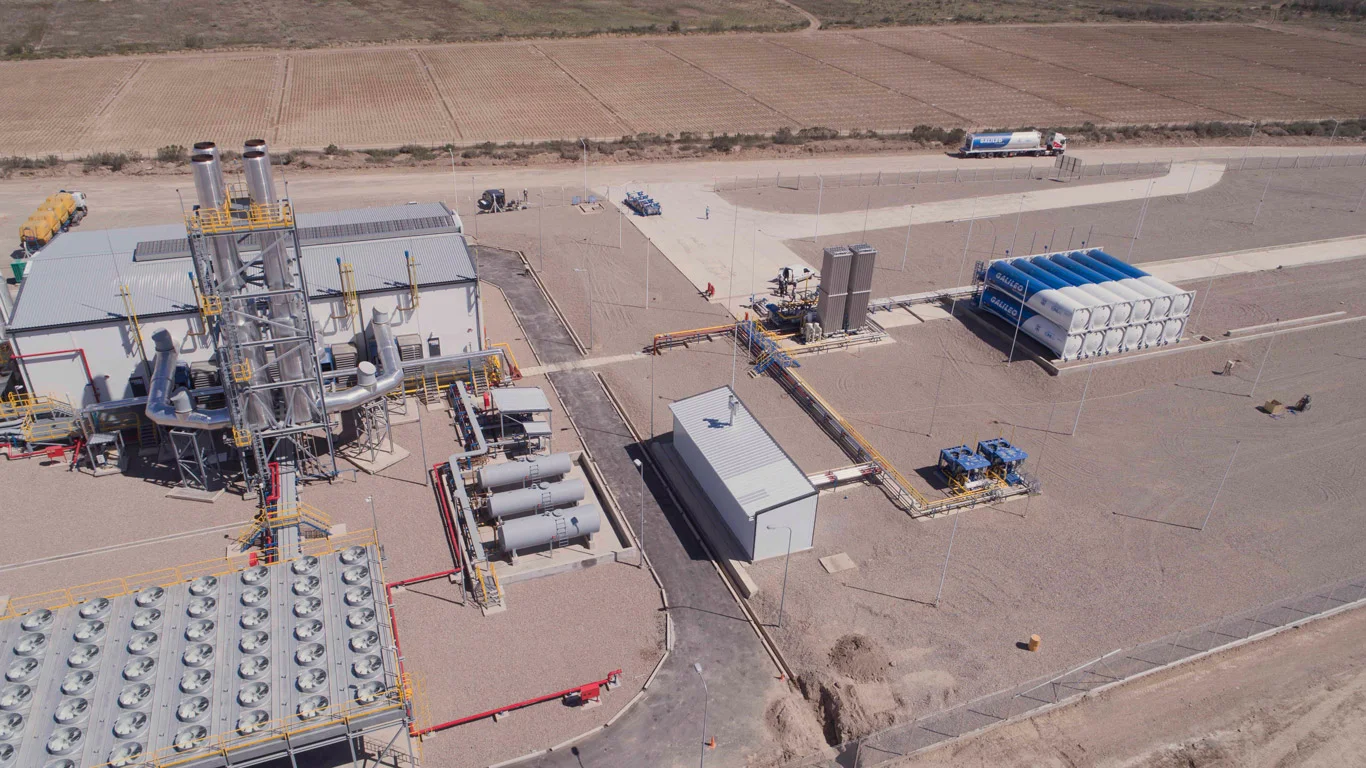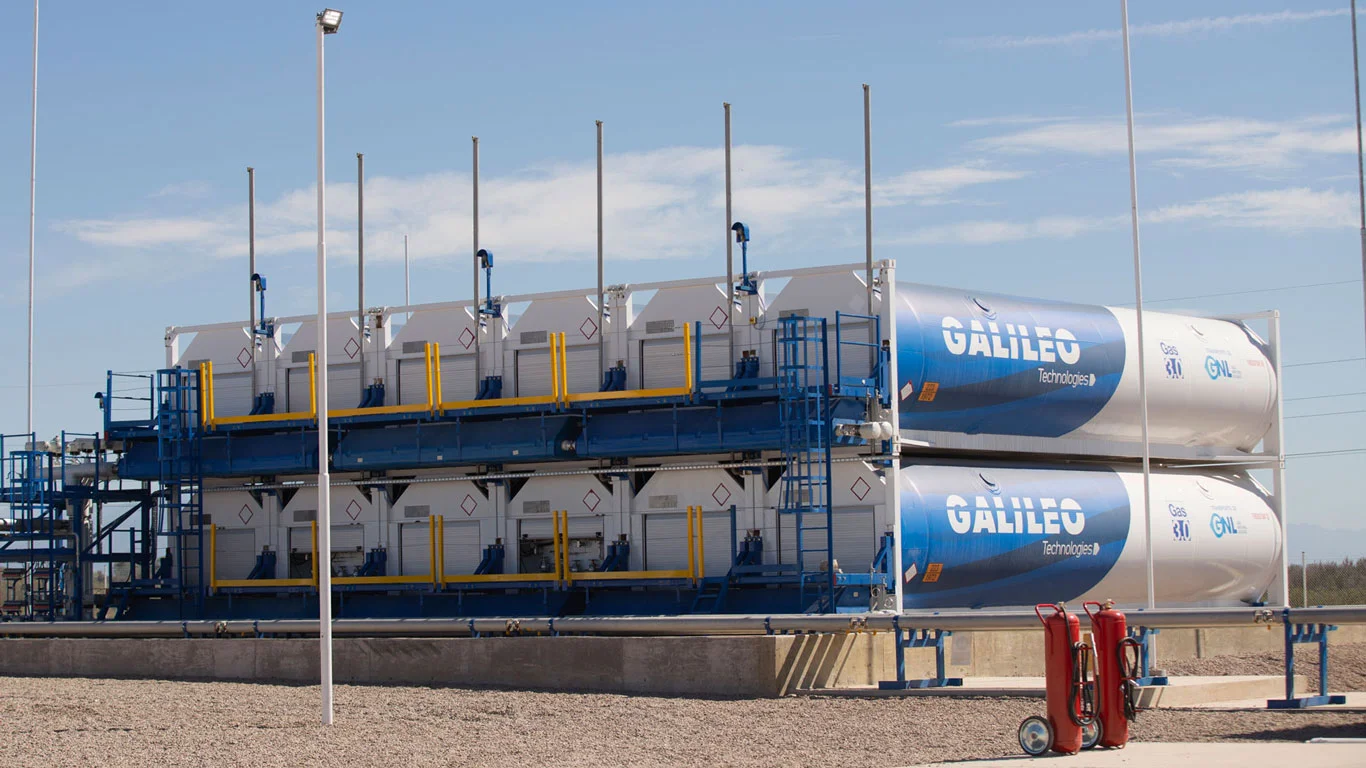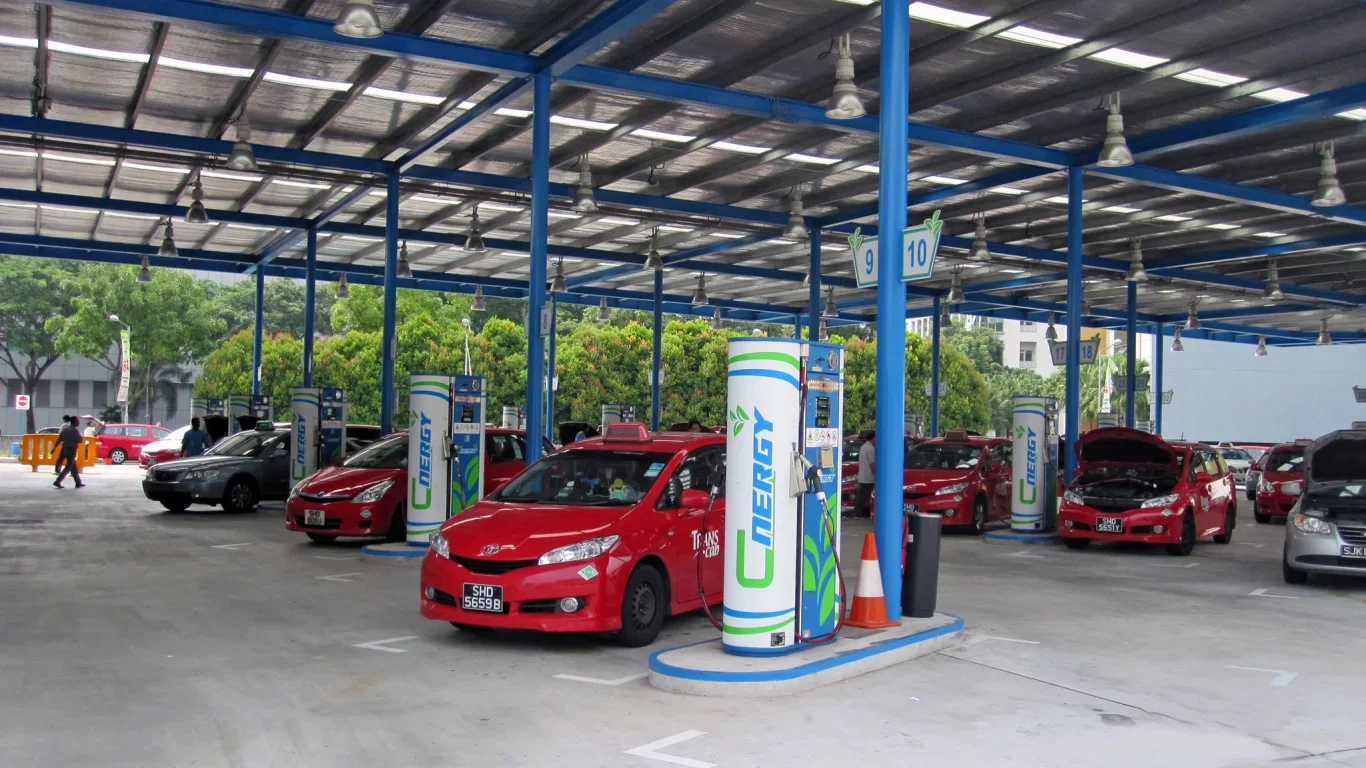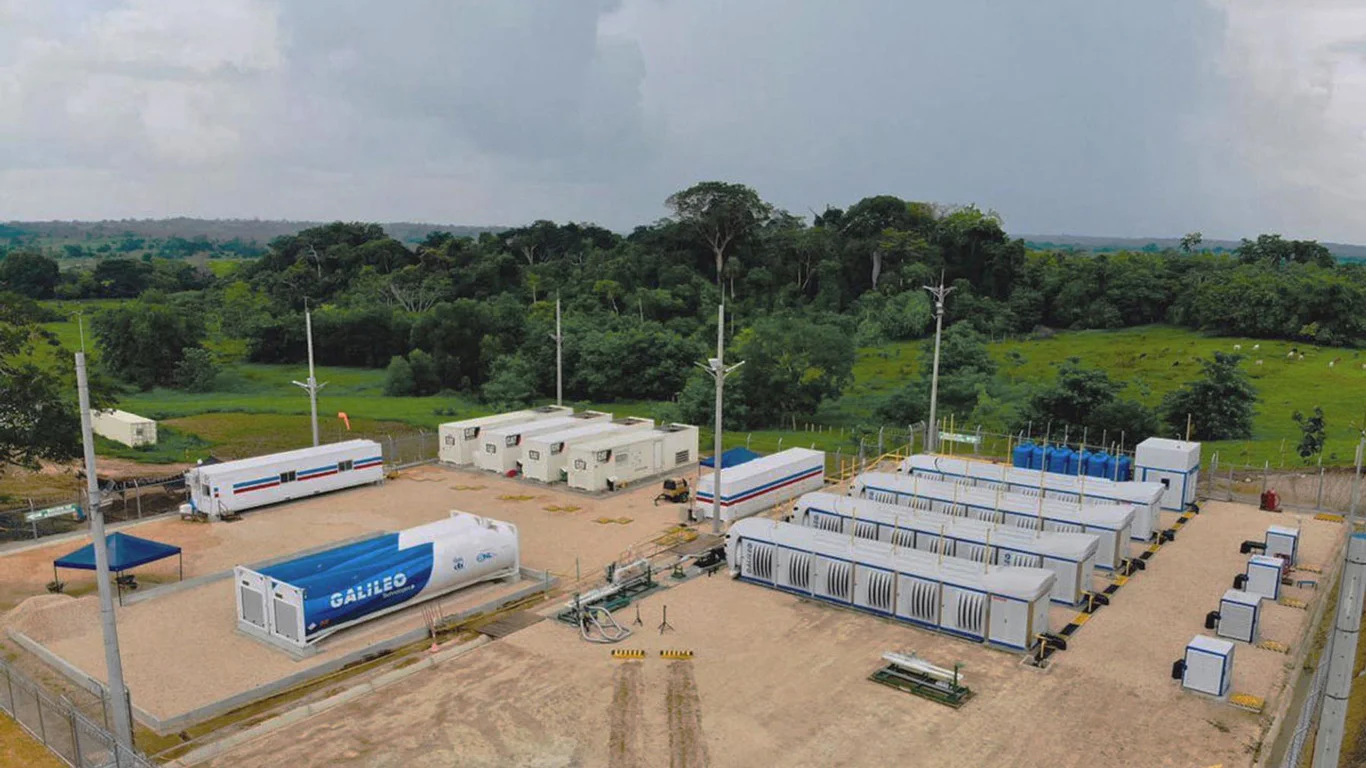19 NOV 2025

The shift toward an energy mix with a smaller footprint demands replacing more polluting fuels—like diesel and heavy fuel oil—with alternatives that cut emissions without sacrificing continuity or cost-effectiveness. Natural gas and biomethane are key players in this transition: they boost local air quality (NOₓ and particulate matter) and improve the overall footprint (CO₂e) without requiring radical process changes in industry.
The main challenge, however, isn't the energy source itself, but the infrastructure. The pipeline network often fails to reach where demand exists, or it can't do so within the timelines and capital investment limits that specific projects can support.
In this context, a virtual pipeline picks up gas at an origin point, conditions it if necessary, and transports it by road as CNG (compressed) or LNG (liquefied). It then delivers it to the destination at the specified pressure and quality. The difference from a physical pipeline isn't the goal—"getting the molecule closer to the consumer"—but the deployment method: it leverages existing road networks, significantly reducing civil construction and time to commissioning.
Why it matters now more than ever
Pipeline expansion is burdened by extended cycles for permitting and construction, high CAPEX, and environmental constraints. Simultaneously, demand is becoming more scattered—medium industrial parks, sugar mills, food & beverage facilities, mining operations far from trunk lines, resorts, and isolated communities—and new or unconnected sources are emerging, such as stranded wells, associated gas, distribution networks lacking spare capacity, and biomethane plants at landfills or agro-industries.
The virtual pipeline bridges that gap. It allows for supply within months, utilizes readily available road infrastructure, and enables investment decisions to be made based on actual operating data rather than mere assumptions.
A clear example comes from Brazil. The energy company Eneva takes gas from the Azulão field (Amazonia), liquefies it at the source, and transports it in cryogenic tanks 1,100 km north to the Jaguatirica II power plant in Boa Vista (Roraima). There, it is regasified for power generation, replacing diesel in the state's isolated system. This case illustrates the logic of an LNG virtual pipeline in sensitive geographical areas where laying a physical pipeline would have required crossing indigenous territories and environmentally complex zones.
These and other precedents confirm that the virtual pipeline complements existing infrastructure. It provides immediate access to competitive gas on shorter timelines, generates verifiable operating evidence for future investment choices, and mitigates regulatory and social risks linked to long, linear construction projects.
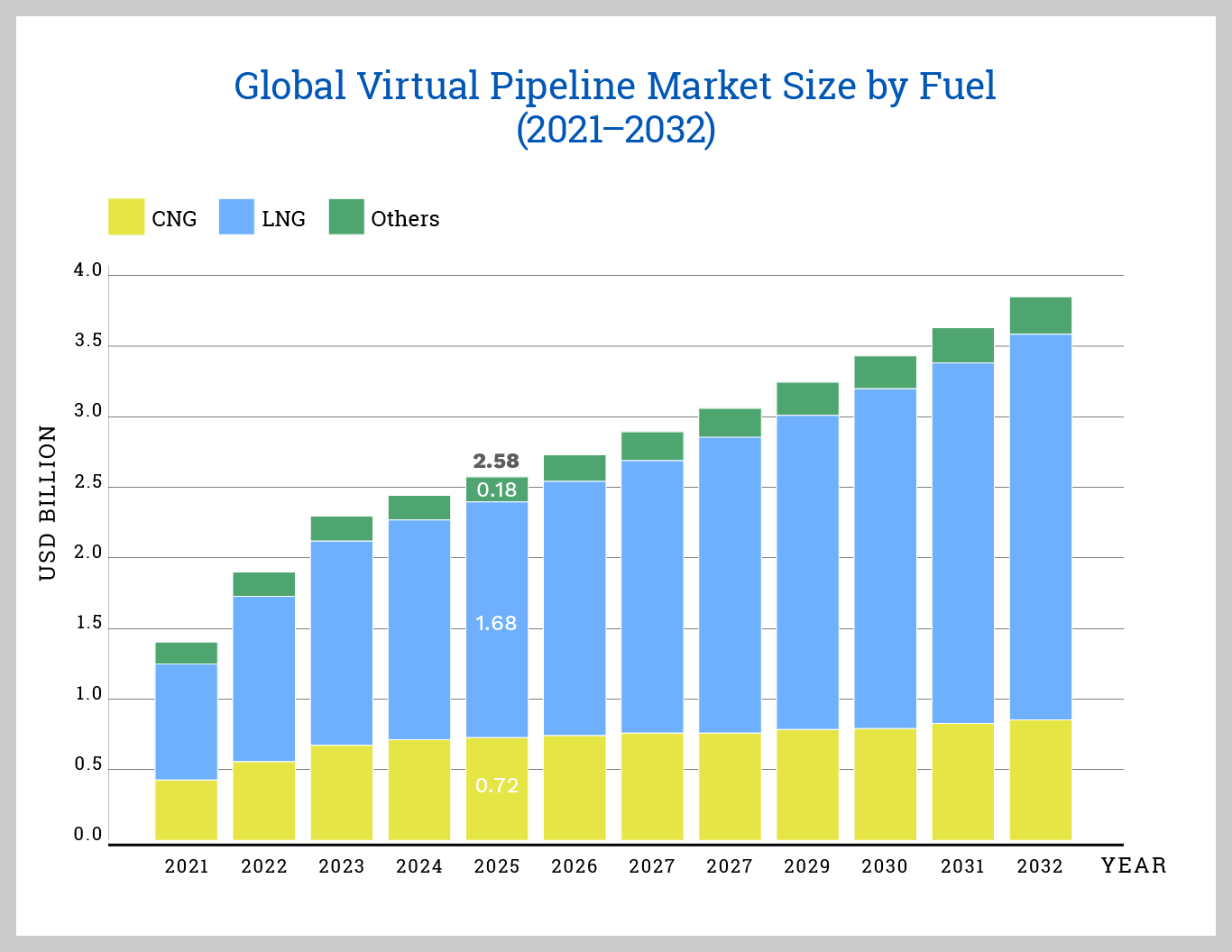
How it works
A virtual pipeline mirrors the "source-to-offtaker" logic of a physical pipeline, but it moves the linear segment onto the highway.
The origin point can vary: a connection to the grid, a gas well, associated gas from oilfields, or a biomethane plant. Following a gas analysis, conditioning is performed when necessary (removing H₂S, CO₂, and H₂O) to protect equipment and meet compression or liquefaction specifications.
The gas is then converted into a road-transportable form—CNG or LNG—and moved in mobile units to a receiving station. At the station, it is stored (if needed), regulated, and metered before consumption. The key value lies in the deployment: utilizing existing roads, achieving modularity, and enabling commissioning in just a matter of months.
CNG Virtual Pipeline
For CNG, modular compressors raise the gas pressure, preparing it for road transport. Many operators use tube-trailers: semi-trailers with refillable seamless steel tubes mounted on a chassis or skid, featuring internal manifolds that streamline loading and unloading.
In 1999, when Galileo Technologies patented the virtual pipeline system, they introduced their own VST® trailers that divide the payload into MAT® containers of 1,000–1,500 Nm³ each, suitable for unit distribution. In this setup, a VST can carry up to three MATs, ensuring each consumption center receives only the volume it requires, which avoids hauling surpluses between customers with differing demands.
The turnover at the receiving station is rapid: charged MATs are dropped off, and empty ones are collected. Meanwhile, telemetry integrated with SCADA monitors pressure levels and triggers automatic replenishment orders when predetermined thresholds are reached. This modularity allows the system to scale with demand and optimizes operating costs by reducing non-productive mileage and fleet downtime. Since the initial patent, the market has introduced compatible variations in both tube-trailers and modular containers.
Nota de capacidad: 1 MAT ≈ 1,000–1,500 Nm³. A standard trailer with 3 MATs typically transports 3,000–4.500 Nm³ per rotation, depending on specifications and conditions.
For larger operations, tube-trailers with 12 and 14 tubes have reference values of ≈8,855 Nm³ and ≈10,305 Nm³ respectively, at 250 bar and 15 °C.
LNG Virtual Pipeline
For LNG, a liquefaction plant reduces the gas volume by roughly 600 times by cooling it to ≈ -162 °C. The liquid is stored in double-walled cryogenic tanks and transported in ISO tanks by road, effectively mirroring liquid-fuel logistics (routes, loading/unloading windows, and fleet management). Upon arrival, a regasification station converts the LNG back to a gaseous state before pressure regulation and metering.
The higher energy density compared to CNG allows for longer distances and larger volumes with fewer rotations and a lower logistical cost per unit delivered.
Other Logistics Modes: Rail and Inland Waterways (LNG)
For long distances where rail or waterway corridors exist, LNG can also move by train or barge, forming an intermodal virtual pipeline.
In Europe, specialized cryogenic tank wagons and door-to-door chains have been tested on rail. In the United States, there were initial case-by-case authorizations, followed by regulatory changes that now restrict general approval.
On inland waterways, the European Union championed projects to implement the LNG chain along the Rhine–Main–Danube axis (including terminals, barges, and bunker barges) and funded network studies to pinpoint bunkering and transfer locations. These alternatives require loading/unloading facilities, boil-off management, safety zones, and permits. However, where these systems are established, they can reduce the unit logistical cost for high volumes and lower the overall footprint per ton transported.
When to choose CNG vs. LNG
The choice isn't based on preference—it's a matter of geometry and logistics.
For short to medium ranges where demand is low or moderate and spread across multiple sites, CNG is typically the appropriate option. Replenishing units—whether tube-trailers or modular containers—can keep pace with consumption without the need for cryogenic infrastructure.
As distance—typically beyond approximately 300 km—or volumes increase, LNG becomes more efficient. Its energy density reduces the number of trips and lowers logistical emissions.
This practical criterion is adjusted on a case-by-case basis using demand curves, turn-around times, buffers, and service level. The final decision stems from a techno-economic and operational balance, not from a technological "dogma".
To put this in perspective, market experience is helpful. In North America, operators like XNG, NG Advantage, and Certarus supply CNG by road to industries and utilities far from pipelines, using direct-from-trailer consumption or mother–daughter schemes. In Europe, operators like HAM integrate LNG road transport with satellite regasification plants for industrial clients lacking grid connection. In Mendoza, Argentina, Galileo deployed a wellhead liquefaction system, with road transport and subsequent regasification at a thermal power plant that fuels the generation turbines.
In every scenario, the technology choice is dictated by the use case: how distant the demand is, how much is consumed, and how consistently. The "right" solution is the one that guarantees continuity with the simplest possible logistics.

What a virtual pipeline enables
The first key opportunity is to monetize gas that currently cannot reach the market: stranded wells, associated gas, or biomethane that would otherwise be underutilized without a physical pipeline route. Converting these points into compression or liquefaction nodes transforms streams that might otherwise be vented or flared into usable product and energy.
The second is to traverse sensitive territories by utilizing existing road corridors, which reduces interference with ecosystems—such as rainforests, wetlands, or protected areas—and simplifies the permitting process. For instance, since 2013, the distributor SEC has run a CNG virtual pipeline in Sabah (Borneo) to supply industrial customers located far from the physical pipeline. Extending the pipeline would have required an unaffordable investment and seriously compromised the island's forests and reserves, which are both environmental heritage and a tourism asset.
Scalability and Operating Costs
Modularity is the virtual pipeline's defining trait: it allows capacity to be increased at the pace of demand—by adding containers or rotations—without causing a major spike in the CAPEX or OPEX per unit delivered.
Connecting New Gas Sources
Beyond extending coverage, the virtual pipeline also integrates supply: it connects new sources to specific loads. In upstream operations, producers can directly reach consumers with stranded-well or associated gas, making streams economical that wouldn't justify a physical pipeline or reducing gathering investment over vast territories. In the agro-industrial sector, biomethane from biodigesters gains a monetization channel to boilers, kilns, or distributed generation. At the same time, medium industrial parks, off-corridor mining operations, or tourism hubs can access gas and scale up in modules, supported by telemetry/SCADA and replenishment protocols.
Safety and Operational Continuity
Safety is built into every stage. For CNG, semi-trailers use refillable seamless steel tubes—the basis for tube-trailers—designed, constructed, and tested according to ISO 11120. For LNG, ISO tanks are double-walled, vacuum-insulated, and fitted with relief valves.
As Class 2 (gases) road transport, operations are governed by ADR-type regulations and their local equivalents, with requirements for labeling, documentation, training, and procedures. At the receiving station, multi-stage regulation, fiscal metering, and—when applicable—odorization are applied, along with block valves and safe venting.
Beyond the hardware, monitored operation is what guarantees continuity. SCADA tracks pressure, temperature, and levels in real time. When a container's gauge—for example, a MAT—drops below the threshold, the system automatically issues a replenishment order, schedules the replacement, and confirms delivery. The goal is that, from the user's perspective, the experience is the same as being connected to a physical pipeline, with controls tailored to road logistics.
There’s life beyond pipelines
A virtual pipeline doesn't replace traditional pipelines; it extends their reach. Where a physical route is unfeasible due to time, cost, or environmental concerns, it brings the molecule closer with predictability, allows for the measurement of results, and enables long-term decisions based on real data. In a transition context, its value is not just technical: it is a tool for access, competitiveness, and emissions reduction compared to more polluting fuels—serving both industries and communities that would otherwise remain off the gas grid.




